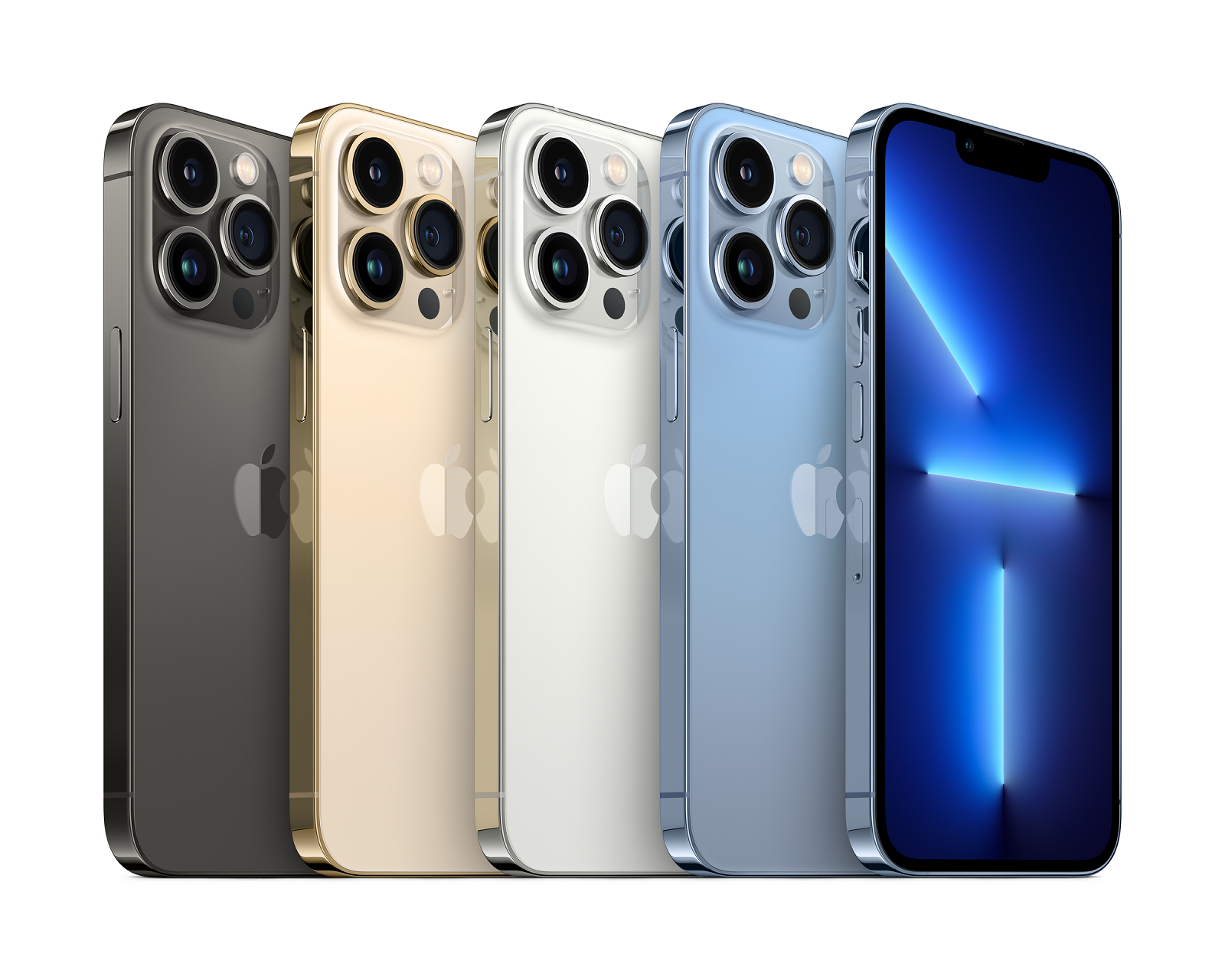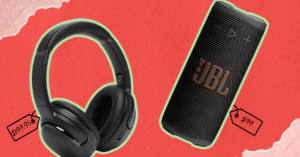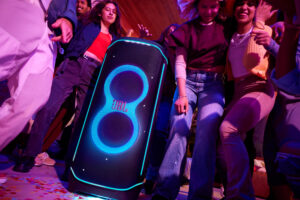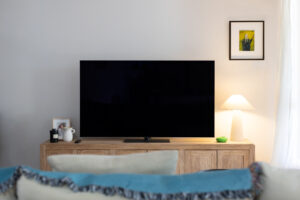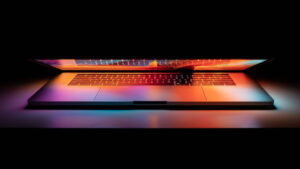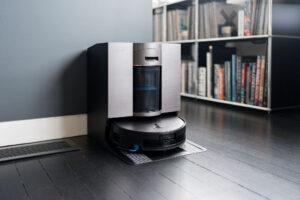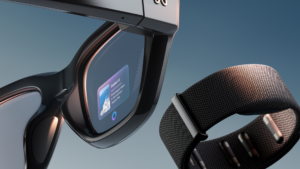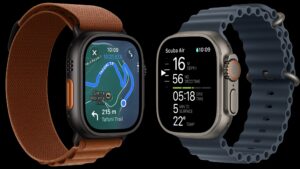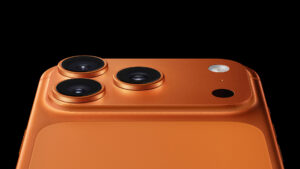Once again, Apple has been sitting on the worst kept secret in the smartphone industry, as the company has now confirmed much of what we already knew. That is, the iPhone 13 is here, once again in four models – the iPhone 13, iPhone 13 Mini, iPhone 13 Pro, and iPhone 13 Pro Max – with a few new twists that should go far in satisfying Apple fiends come release day on September 24, 2021.
What can you expect? Longer battery life; substantial camera upgrades, including the impressive new Cinematic Mode; a few small design changes; and, for the Pro models, an adaptive variable refresh rate that can max out at 120Hz.
There are a few things we need to get across first before we get to the new camera features and the highly touted A15 Bionic chip.
UPDATE [07/09/2022]: Looking for all the rumours and leaks on the new iPhone 14? Check out our rolling round-up of everything we know about all four new iPhone 14 models.
Pricing For The New iPhone 13 Models In Australia
Let’s get Australian pricing out of the way, as it’s one of the biggest surprises. The cheapest Apple iPhone 13 model is actually the exact same price as its predecessor’s 64GB option. That’d be the Apple iPhone 13 Mini with 128GB of storage, starting at $1,199 in Australia.
Note that there is no 64GB option for any of the iPhone 13 models this year.
On the other hand, the most expensive option from this line-up will be the all-new 1TB Apple iPhone 13 Pro and Pro Max models, the most expensive of which is $2,719 in Australia. And while that price tag is appropriately eye-watering even for the staunchest Apple fanboy, it’s a shock to see that the Apple iPhone 13 Pro Max actually starts at $1,849 – the exact same price that its 12 variant started at.
Apple’s decision not to hike the prices, yet offer plenty of upgrades, should be commended.
Here’s every Australian pricing for the iPhone 13 line-up
- Apple iPhone 13 Mini 128GB – $1,199
- Apple iPhone 13 Mini 256GB – $1,369
- Apple iPhone 13 Mini 512GB – $1,719
- Apple iPhone 13 128GB – $1,349
- Apple iPhone 13 256GB – $1,519
- Apple iPhone 13 512GB – $1,869
- Apple iPhone 13 Pro 128GB – $1,699
- Apple iPhone 13 Pro 256GB – $1,869
- Apple iPhone 13 Pro 512GB – $2,219
- Apple iPhone 13 Pro 1TB – $2,569
- Apple iPhone 13 Pro Max 128GB – $1,849
- Apple iPhone 13 Pro Max 256GB – $2,019
- Apple iPhone Pro Max 512GB – $2,369
- Apple iPhone 13 Pro Max 1TB – $2,719
Pre-orders for all iPhone 13 models start from 10 PM AEST on Friday, September 17th. All devices will arrive a week later, from Friday, September 24th.
Apple iPhone 13 Design
While the design leaps from the Apple iPhone 12 aren’t substantial, the Apple iPhone 13 line-up still brings a few subtle switch-ups to aesthetics that should help build an even more premium feel.
You’ve got an exceptionally colour accurate Super Retina XDR display on all models, and the top-tier Pro versions include a new feature called ProMotion, featuring a variable refresh rate that is smart enough to push up to 120Hz when you need it, and as low as 10Hz when you don’t.
This is a great example of the software and hardware integration Apple has claimed to improve, meaning ProMotion will work as a function of the phone’s improved power efficiency, translating to better battery life at all times. As has been an issue with smartphones for years now, achieving a high refresh rate – which makes every action on the screen feel smoother as it updates more frequently – typically means massive battery drain. It appears iPhone has finally managed to address this issue, most likely due the increasing processing power to the A15 Bionic chip.
The iPhone 13 proper features a perfectly sized 6.1-inch display (as does the Pro), but like the 5.4-inch iPhone 13 Mini, it won’t benefit from ProMotion. If you want a higher refresh rate, you’d need to fork out for either the Pro and Pro Max.
The iPhone Pro Max is obviously going to be the largest of the bunch, with a supersized 6.7-inch display.
“This is the brightest display ever on iPhone with up to 25% higher max outdoor brightness, at 1000 nits, so users will experience amazing resolution, colour, and contrast whether casually scrolling through the web or watching HDR videos,” says Apple.
There’s a redesigned camera notch across all models, moving away from Apple’s stubbornly large upper notch and slimming down the front-facing system by 20% to offer more display area, while still keeping FaceID for biometrics. This is protected by a Ceramic Shield on the front, which helps the phone achieve industry-leading IP68 water and dust resistance rating.
All phones now feature a redesigned rear camera layout, following in the footsteps of a few Android competitors by arranging the lenses in a diagonal layout. The dual set-up of a wide and ultra-wide lens on the standard models (13 and 13 Mini) now gets a sensor-shift stabilisation on the primary lens. Last year, this was a feature that was exclusive to the iPhone 12 Pro Max, so it’s great to see Apple has been a bit more generous with their less expensive models this time around.
Colourways are vastly different across both groups of iPhone 13 models. The 13 and 13 Mini will have a more vibrant range with Pink, Blue, Midnight, Starlight, and Product (which is just red) variants. The more expensive models (Pro and Pro Max) have a more premium look with Graphite, Gold, Silver, and a new Sierra Blue.
Apple iPhone 13: Cameras & Cinematic Mode
Most of the hype from the new Apple iPhone 13 models is going to, understandably, surround Cinematic Mode. It’s perhaps the most meaningful upgrade from any previous iPhone model and will swiftly change the game for anyone shooting content on their smartphone.
Cinematic Mode plays into the phone’s video capturing features, described by Apple as a program that lets you “effortlessly create cinema-grade videos.” Through studying the way filmmakers shoot their subjects, Apple has been able to create a mode that essentially employs a filmmaking technique known as rack focus – this is where autofocus can seamlessly transition from one subject to another during motion, with the ability to shift focus along with the background’s bokeh effect for seamless portrait-style video. Cinematic Mode also records in Dolby Vision HDR, which is perhaps one of the better examples of how the improved A15 Bionic chip is able to handle massive loads.
Impressively, autofocus in Cinematic Mode can even be changed during post-processing in the Photos app and iMovie for iOS, which should be very welcome news for anyone who is trying to use the iPhone to switch up their content skills. Although do note that it seems to only shoot up to 1080p.
If you’re mostly in the iPhone market for the cameras, you’re obviously going to get a better experience from the Pro and Pro Max models. Although if you’re opting for the cheaper models, at least you’ll get the advanced dual-camera system with a newly designed wide camera capable of welcoming 47% more light than that of the iPhone 12. Apple has also bought over the sensor-shift OIS technology, which they first introduced for the iPhone 12 Pro Max, to help up the value of these standard models.
The Pro and Pro Max beef things up with the rear cameras, sporting a 12MP f/1.6 wide lens and a 12MP f/2.4 120-degree ultra-wide camera lens with their triple-lens set-up. They too welcome substantially more light than any Apple iPhone lens before them, with lens rated for a giant 1.9 micron pixels, meaning crispier colours and more accurate textural details, even in low light performance with night mode.
The A15 Bionic has allowed for a new image signal processor to help reduce noise and improve tone mapping, part of the software which allows for the first-ever macro photography mode on an iPhone. This means the Pro models can essentially use their iPhone as a magnifying glass, with a minimum focus distance of 2cm. Marco will also extend to video capture, including slow motion and time-lapse.
The Pro models also boast a new 77mm telephoto camera to help get closer to subjects without blurring the results, offering 3x optical zoom for a total 6x optical zoom range on the camera system.
Clearly, Apple has been trying to tighten up the end-to-end workflow of content creation, complemented by an advanced video codec called ProRes, the same which is used as the final delivery format for commercials and feature films. Being able to intuitively up your post-production game will be a valuable tool for anyone using the Pro iPhone models for more commercially-minded content work.
Apple iPhone 13: Performance & New A15 Bionic Chip
Every feature of the new iPhone 13 line-up centres around the Apple A15 Bionic chip, which is up to 50% faster “than the leading competition” in CPU speed – according to Apple.
For the standard models, the new chip, which is claimed as a significant improvement over the iPhone 12’s A14, has a 4-core GPU which is up to 30% faster than its competition. Considering how blazingly fast and efficient the iPhone 12 was, it’s safe to assume the iPhone 13 will be a top-performer in the smartphone industry for quite some time.
Apple also promises an “advanced 5G experience,” with customised hardware design able to support more 5G bands for better coverage. By the end of this year, support for 5G on iPhone will be double worldwide what it is right now, so there’s a nice little incentive caked in for anyone who is expecting the best coverage.
The new chip should also translate to better integration with the new Apple Watch Series 7, which was also announced today and features a number of qualitative improvements, including a bigger screen and larger buttons.
Early Geekbench reports suggest the A15 Bionic will be a massive success for Apple, and a swift win for iPhone users. Particularly hype is surrounding the GPU performance on the Pro models, with the Geekbench score of 14216 for the iPhone 13 Pro bring 55% higher than that of the iPhone 12 Pro (which scored 9123)
Apple iPhone 13: Longest Battery Life Yet
Apple hasn’t been specific with battery figures, as expected, but they are promising the longest battery life on an iPhone. Obviously, that’s all going to be relative to the model you choose, but an Apple spokesperson has told Boss Hunting that users of the iPhone 13 Pro Max can expect up to 2.5 longer battery life versus the iPhone 12 Pro Max.
The A15’s processing performance should play a huge role here, with advanced power efficiency strategies that constantly temper the phone’s performance with a more economical approach power. This will theoretically boost battery life in an adaptive way to easily bring you over a day’s worth of juice.
Apple is also doubling down on wireless charging with new MagSafe accessories, which we’ll be able to get into when we go hands-on with the phone.
Apple iPhone 13 Pro VS Apple iPhone 13 Pro Max: Main Differences
The top-tier Pro versions aren’t too different in pricing. The 1TB model of the Pro will be $2,569 in Australia, while the 1TB model of the Pro Max will be $2,719. But what makes up the difference? It’s mostly to do with size and battery life.
There’s the obvious size difference of course, but there are a few battery points to make too, With the Pro Max, Apple promises around 6 hours longer battery life for video playback, and about 5 hours longer battery life with audio playback, compared to the Apple iPhone 13 Pro. The Pro Max should also take about 5 minutes longer to charge to 50%, making the Pro the fastest in the series when it comes to charging time.
Whether or not a paltry uptick in battery life (which, honestly, doesn’t matter as much given the MagSafe snap-on wireless charging is so reliable nowadays) is worth the extra expenditure is up to you. What you’ll mainly want to consider is if you want the Pro’s more compact body or the Pro Max’s imposing stature. For all dimensions, check out the spec sheets below.
Is the iPhone 13 worth the upgrade?
If you’ve got an iPhone 12 you are probably wondering if it’s worth trading in your current phone and forking out a few extra hundred bucks for the iPhone 13. From the looks of things, it is. While we haven’t gone hands-on with any of the 4 iPhone 13 models just yet, meaningful upgrades to the camera system, battery, and the new A15 Bionic chip are exciting features for all iPhone models.
And that’s one of the most valuable things here. Apple hasn’t been stingy this time around – all models are appropriately high-end, so even the iPhone 13 mini would be worth a purchase. Though we think the Pro should easily be the most popular choice when the iPhone 13 models are released in Australia on September 24.
Apple Trade-In Details
Apple will once again be offering trade-in deals for anyone who has an old iPhone and wants to upgrade. That means we now have estimated figures for the trade-in value of all four iPhone 12 models, which you can obviously use towards the iPhone 13 prices. The following are the approximate trade-in prices for your iPhone 12 models.
- iPhone 12 Pro Max – Up to $1,120
- iPhone 12 Pro – Up to $950
- iPhone 12 – Up to $745
- iPhone 12 mini – Up to $635
As always, trading in your old Apple iPhone for credit or an Apple Gift Card is very straightforward. You’ve got two options, you can either return the old model to Apple using a prepaid trade-in kit, which they send you upon enquiry. You just need to drop it off at the local post office or arrange a courier for pick-up. Or you can just trade it in an Apple Store.
Apple iPhone 13 Technical Specs
Capacity: 128GB, 256GB, 512GB
Size: 146.7mm x 71.5mm x 7.65mm
Weight: 174g
Display: Super Retina XDR display 6.1‑inch (diagonal) all‑screen OLED display
Water-Resistance: IP68
Chip: A15 Bionic
Camera: Dual 12MP camera system: Wide and Ultra Wide cameras
Video: HDR with Dolby Vision, HDR10 and HLG
OS: iOS 15
Apple iPhone 13 Mini Technical Specs
Capacity: 128GB, 256GB, 512GB
Size: 131.5mm x 64.2mm x 7.65mm
Weight: 140g
Display: Super Retina XDR display 5.4‑inch (diagonal) all‑screen OLED display
Water-Resistance: IP68
Chip: A15 Bionic
Camera: Dual 12MP camera system: Wide and Ultra Wide cameras
Video: HDR with Dolby Vision, HDR10 and HLG
OS: iOS 15
Apple iPhone 13 Pro Technical Specs
Capacity: 128GB, 256GB, 512GB, 1TB
Size: 146.7mm x 71.5mm x 7.65mm
Weight: 203g
Display: Super Retina XDR display 6.1‑inch (diagonal) all‑screen OLED display
Water-Resistance: IP68
Chip: A15 Bionic
Camera: Pro 12MP camera system: Telephoto, Wide and Ultra Wide cameras
OS: iOS 15
Apple iPhone 13 Pro Max Technical Specs
Capacity: 128GB, 256GB, 512GB, 1TB
Size: 160.8mm x 78.5mm x 7.65mm
Weight: 238g
Display: Super Retina XDR display 6.7‑inch (diagonal) all‑screen OLED display
Water-Resistance: IP68
Chip: A15 Bionic
Camera: Pro 12MP camera system: Telephoto, Wide and Ultra Wide cameras
OS: iOS 15
Apple iPhone 2021 Models – Frequently Asked Questions
What is the Australian Release Date for the iPhone 13?
Apple has announced that all four models of the iPhone 13 – the iPhone 13, iPhone 13 Mini, iPhone 13 Pro, and iPhone 13 Pro Max – will be available from Friday September 24.
How much will the iPhone 13 cost in Australia?
The least expensive iPhone 13 model (iPhone 13 Mini with 128GB) will cost $1,199 in Australia. The most expensive model (iPhone 13 Pro Max with 1TB) will cost $2,719 in Australia.
What are the new features of the iPhone 13?
The iPhone 13 will include Apple’s new A15 Bionic chip, as well as a key new camera feature called Cinematic Mode, longer battery life, and lenses that can capture more light for better details.
